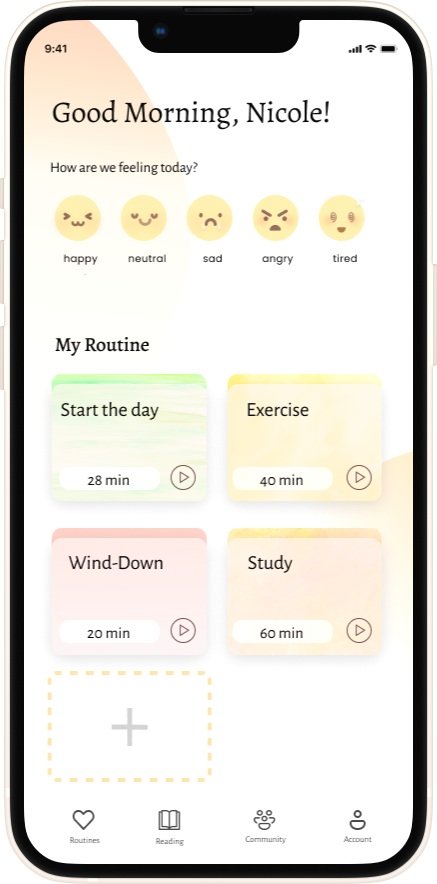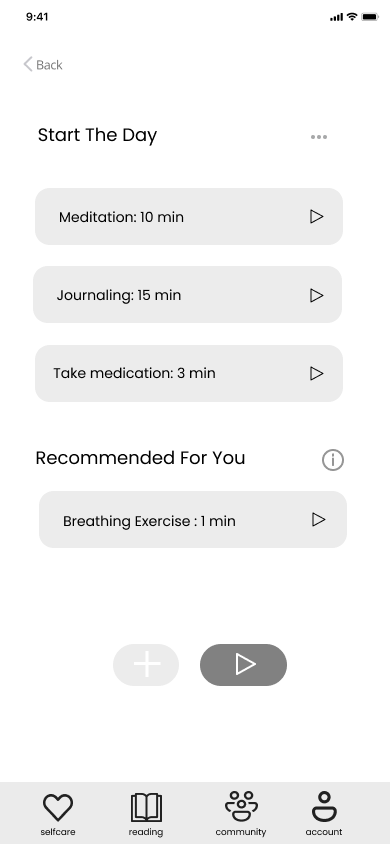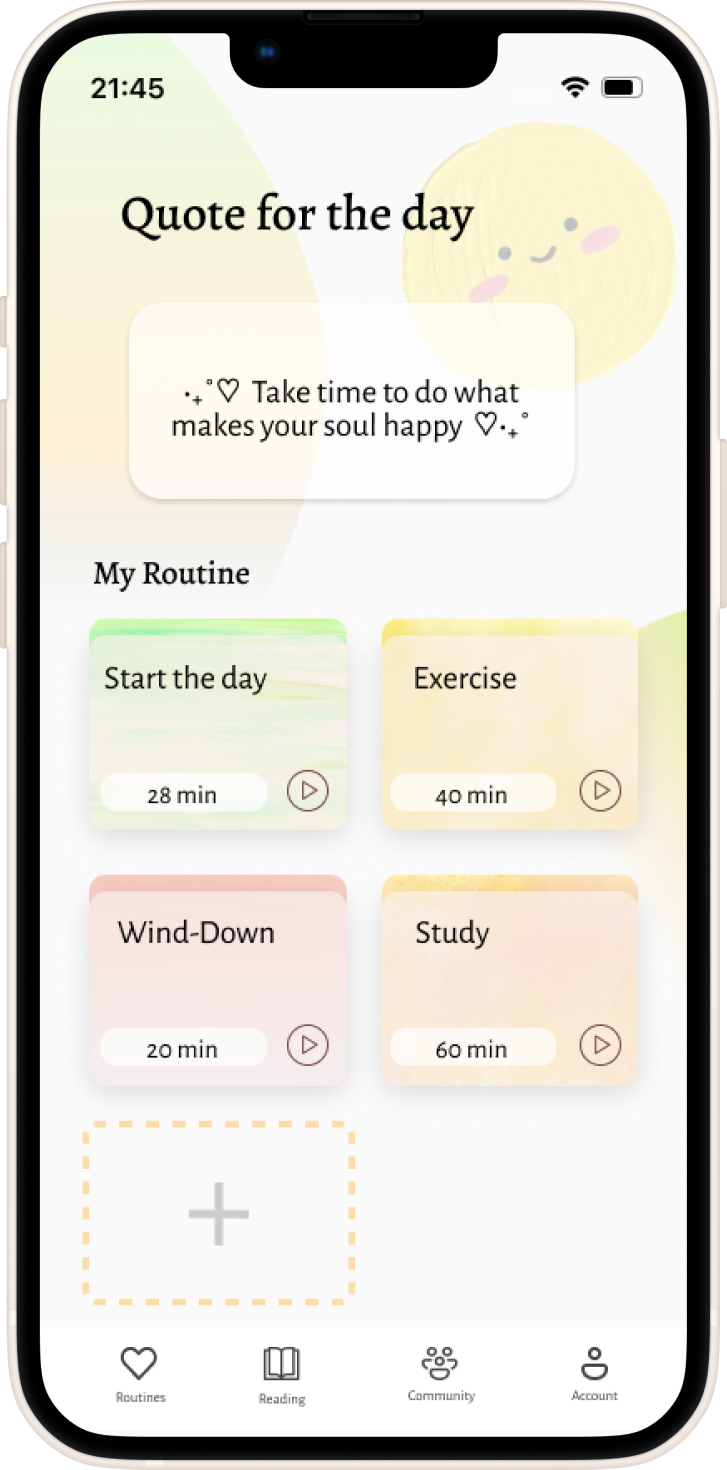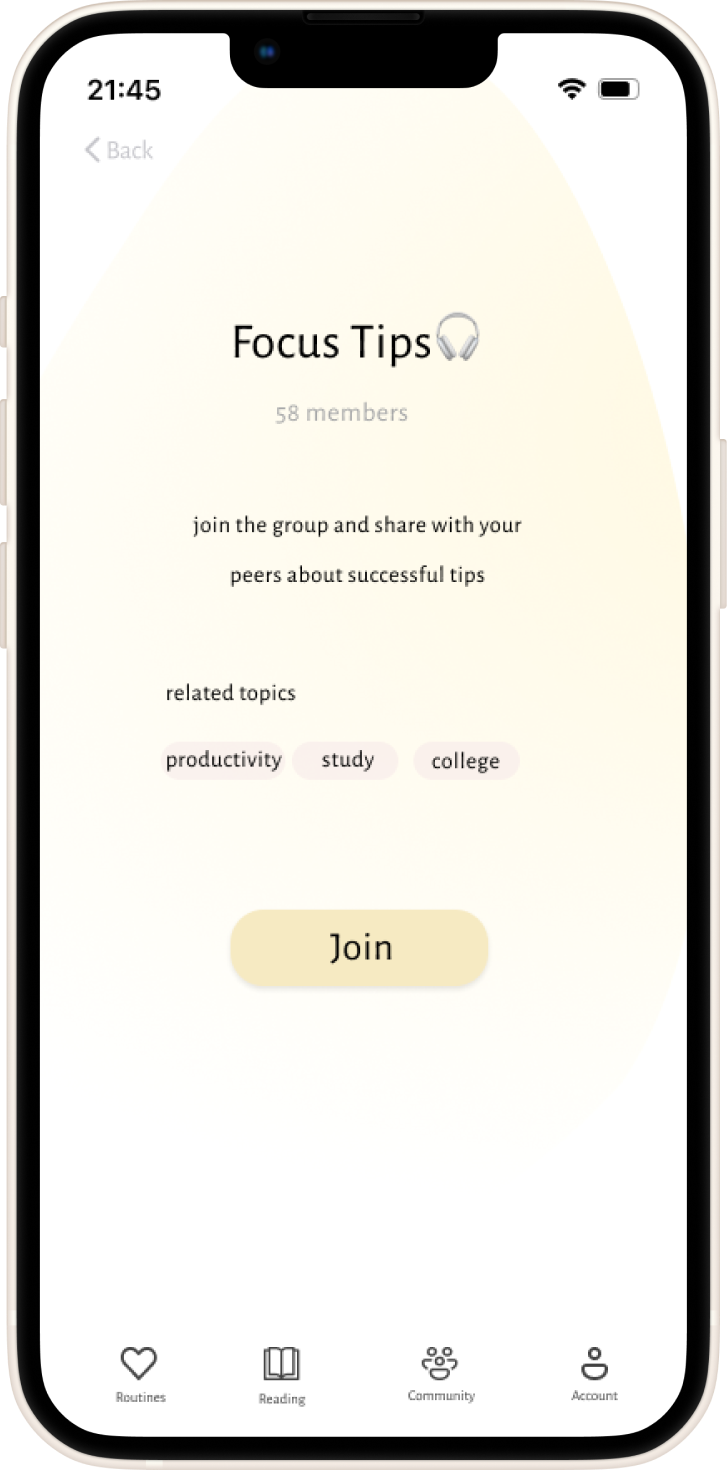
FocusU
Simplify college experience for students with ADHD (Attention Deficit Hyperactivity Disorder)
Background
College students with ADHD constitute a unique and promising yet often unnoticed group. As per the American College Health Association (2020), the prevalence of ADHD among college students has risen significantly over the past two decades, climbing from approximately 2% to around 11.6% of the student population.
Upon studying it in my psychology major class, I recognized the significant potential for developing products that could assist students with ADHD, with the goal of enhancing their academic and social experiences.
Project at a Glance
Focus U is an innovative mobile app that aim to empower college students with ADHD (Attention Deficit Hyperactivity Disorder). It addresses the unique challenges faced by these students in academic reading, planning out daily routines, as well as finding a community of people with similar experiences. By combining user-centered design principles with existing technology, FocusU aims to create a better college life experience for students with ADHD.
Duration:
12 weeks
Tools & Methods:
Figma, User Research, Usability Testing, Competitive Analysis, Affinity Diagram
Role:
Sole UX Designer& UX Researcher
Problem Statement
How might we help students with ADHD build routines to stay productive, do readings with ease, and feel supported?
Goal
To create a product that is able to connect students with ADHD with a support system with the intention of improving their college experience.
User Research
In order to gain deeper insights into the specific needs and pain points experienced by college students with ADHD, I constructed research goals and conducted semi-structured interviews to actually go through their daily lives and struggles they face along the way.
After the user interviews, I collected the results and performed affinity diagramming in conjunction with secondary research to identify commonalities in the challenges faced by users. So that I can further take action to determine the most effective strategies to enhance their overall experience.
Research Findings / Pain Points
01 Students with ADHD reflect the need for daily routines to prevent the waste of mass blocks of time
02 Reading long, unfamiliar academic texts can be an obstacle for learning
03 Students with ADHD desire inclusive, safe community of college students with similar struggles to make connections and keep others accountable
User Persona
Nicole Jang
Nicole is a very energetic and creative individual, but in some ways also tends to get easily distracted, though her passion for learning new stuff make up for that. Nicole met with a psychiatrist when she was 17 and got her ADHD diagnosed. She’s been taking medication to help, specifically dexmethylphenidate, which has been working pretty well.
Needs/ Goals
Be on top of responsibilities and errands
Have a fixed daily routine
Prioritize important tasks
Read & learn academic material more efficiently
Pain Points
Poor at time management
The tendency to procrastinate
Sleep troubles, influencing academic performance
Difficulty in reading, particularly staying focused on uninteresting topics
How might we help students with ADHD build routines to stay productive, do readings with ease, and feel supported?
I did first round of user testing on the prototypes for the app. The objective was to actively gauge user opinions and insights regarding the various functions and features of the app.
The users’ feedback served to guide the direction of refining and enhancing the functions of the app I continue to design.
User testing
Information Architecture
After conducting user testing, I designed the app's information architecture by prioritizing the most favored and valuable features to be integrated into the application.
Wireframes
Low-Fidelity Design
Iterations
After designing the low-fidelity prototypes, I conducted another round of user testing to have users navigate tasks through the prototypes, allowing me to identify any buttons or layouts that might be confusing.
Actions
The 'Start New' option is made more obvious, saving users one click. When they come to the page, they can directly choose their preferred way of uploading the file.
Below are the changes I’ve made to the app features according to the users’ feedback.
The users found the “add new” button confusing. I redesigned the button to make the primary button more prominent and changed the visual hierarchy of the page.
A better way of organizing information, deleting unnecessary buttons, clearer visual hierarchy for the user
User Interface Style Guide
High Fidelity Design
The Solution
01.
Daily Routine
The app allows users to personalize their daily experience by selecting their current mood, and in response, it provides tailored inspirational or motivational quotes to uplift and motivate them throughout the day.
Users can efficiently plan and schedule their daily routines within the app, ensuring a structured and productive day ahead and solving the pain point of not having a schedule and procrastinating.
02.
Reading: text to speech
Students with ADHD often struggle with maintaining focus while reading. Text-to-speech technology helps by presenting information in an auditory format, reducing distractions and improving concentration on the content.
Students can create playlists tailored to their subjects or topics, allowing them to navigate their coursework with ease. This feature takes inspiration from popular music apps, making the learning process customizable and fun.
03
Community
FocusU also offers a community feature, designed to foster support and provide resources. This feature empowers students with ADHD by connecting them with small groups where they can engage in discussions about their academic journeys, exchange valuable tips, and draw inspiration from others who share their experiences. The community feature also keeps users well-informed with the latest news and articles related to ADHD. So that the students can navigate through their college life with a sense a community support as well as expert knowledge of ADHD.
Summary
It was an excellent learning chance for me to finish this project. I gained a profound understanding of the significance of adopting a user-centric approach when designing solutions and the importance of involving users in the design process. Sharing the project with friends who face challenges related to ADHD was a touching experience. They expressed gratitude for the existing and potential efforts aimed at supporting individuals with ADHD, highlighting the societal impact that design can have. This experience has ignited my enthusiasm to continue learning and contributing in this field.












































